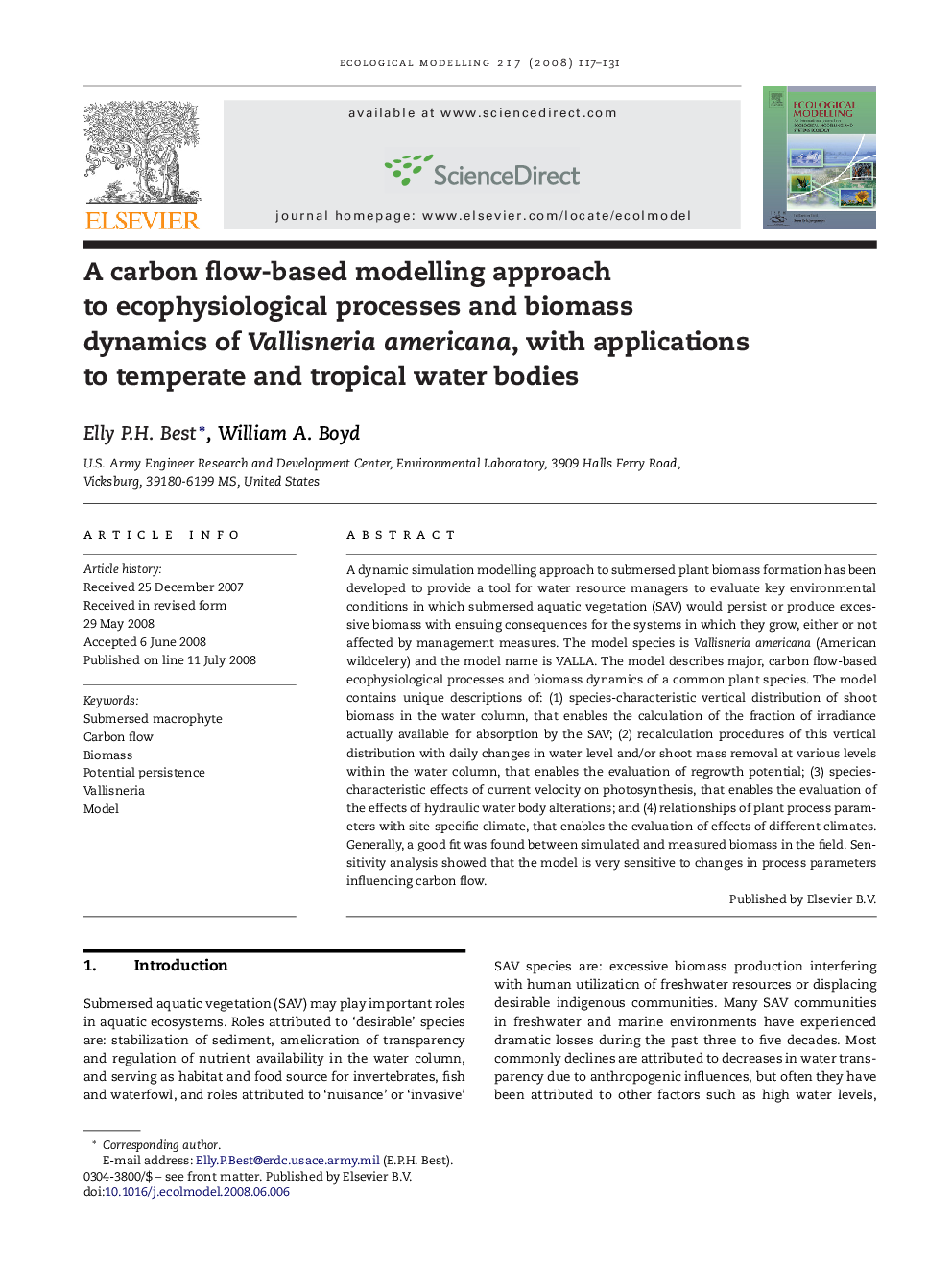| Article ID | Journal | Published Year | Pages | File Type |
|---|---|---|---|---|
| 4377786 | Ecological Modelling | 2008 | 15 Pages |
A dynamic simulation modelling approach to submersed plant biomass formation has been developed to provide a tool for water resource managers to evaluate key environmental conditions in which submersed aquatic vegetation (SAV) would persist or produce excessive biomass with ensuing consequences for the systems in which they grow, either or not affected by management measures. The model species is Vallisneria americana (American wildcelery) and the model name is VALLA. The model describes major, carbon flow-based ecophysiological processes and biomass dynamics of a common plant species. The model contains unique descriptions of: (1) species-characteristic vertical distribution of shoot biomass in the water column, that enables the calculation of the fraction of irradiance actually available for absorption by the SAV; (2) recalculation procedures of this vertical distribution with daily changes in water level and/or shoot mass removal at various levels within the water column, that enables the evaluation of regrowth potential; (3) species-characteristic effects of current velocity on photosynthesis, that enables the evaluation of the effects of hydraulic water body alterations; and (4) relationships of plant process parameters with site-specific climate, that enables the evaluation of effects of different climates. Generally, a good fit was found between simulated and measured biomass in the field. Sensitivity analysis showed that the model is very sensitive to changes in process parameters influencing carbon flow.
